Introduction
Kaizen, a Japanese term meaning ‘change for the better’ or ‘continuous improvement’, is a cornerstone of Lean management and operational excellence. This philosophy embodies the idea that small, incremental changes routinely applied and sustained over a long period result in significant improvements in efficiency, quality, and overall performance.
History and Development
The concept of Kaizen began after World War II when Japanese manufacturers, including Toyota, were looking for a means to compete with their Western counterparts. The methodology became a part of the famous Toyota Production System, laying the foundation for what we now know as Lean management. Kaizen became not just a set of tools but a mindset that seeks to involve all employees, from the CEO to the assembly line workers, in the process of improving operations.
Key Principles
Kaizen is anchored on five foundational principles: teamwork, personal discipline, improved morale, quality circles, and suggestions for improvement. It’s about everyone being empowered to help improve the business, fostering a culture of continuous learning and problem-solving.
When to Use the Tool
Kaizen is ideal in an environment where a culture of persistent, incremental improvement is desired. It is best used when solutions to problems are unclear and input from various levels of the organization is essential. Kaizen is also suitable when the process requires frequent updates and quick adaptations.

How It Works
Implementing Kaizen involves a systematic approach that revolves around identifying areas for improvement, devising solutions, testing those solutions, and then analyzing the outcomes. At its core, Kaizen operates on the principle of continuous improvement through a cycle known as Plan-Do-CheckAct (PDCA), which encourages iterative small changes rather than sweeping transformations all at once.
The first step in the Kaizen process is to identify areas within the organization that could benefit from improvement. This can be achieved through various means, including employee suggestions, process audits, or data analysis. Once potential areas are identified, teams are formed to brainstorm and develop solutions. It’s essential that these teams are diverse, encompassing members from different departments and levels of the organization to bring a range of perspectives to the table.
After solutions are proposed, they are tested on a small scale to assess their effectiveness. This testing phase allows for adjustments and refinements before full-scale implementation. During this stage, data is collected to measure the impact of the changes accurately.
Following the implementation of the solutions, the next step is to check the results against predefined metrics or performance indicators. This evaluation phase is critical for determining whether the changes have achieved the desired outcomes or if further adjustments are necessary
Finally, based on the analysis of the results, actions are taken to either standardize the new processes or to refine them further. This may involve updating procedures, providing additional training, or making other organizational adjustments as needed. Importantly, the cycle doesn’t end here; it repeats continuously, with each iteration building upon the previous ones to drive ongoing improvement.
One of the key aspects of the Kaizen approach is its emphasis on empowering employees at all levels of the organization to participate in the improvement process actively. By involving frontline workers who are closest to the processes in question, Kaizen taps into their firsthand knowledge and insights, making the improvements more targeted and effective.
Moreover, Kaizen encourages a culture of experimentation and learning from both successes and failures. It fosters an environment where employees feel encouraged to propose new ideas, knowing that their contributions are valued and that even small changes can have a significant impact over time.
In summary, the Kaizen methodology is a structured yet flexible approach to continuous improvement that harnesses the collective wisdom and creativity of employees to drive incremental enhancements in organizational processes and performance. By embracing Kaizen, organizations can cultivate a culture of innovation and excellence that propels them toward sustained success in today’s competitive landscape
Benefits
Organizations practicing Kaizen can expect improved productivity, efficiency, and employee engagement. It helps in reducing waste and streamlining processes. Kaizen also often leads to better customer satisfaction as a result of the ongoing improvements in quality and service
Case Study
In a notable case study, a European bank adopted Kaizen to improve its retail banking operations. Through employee workshops identifying inefficiencies in their loan processing, they implemented small changes that reduced the average processing time by over 30%, resulting in increased customer satisfaction and significant cost savings.
Common Mistakes and Pitfalls
The most common mistake in implementing Kaizen is neglecting the ‘continuous’ aspect. Many organizations make initial changes and fail to sustain them, resulting in a relapse into old habits. Additionally, not involving all employees in the process can lead to a lack of buy-in and missed opportunities for improvement
Tips for Success
To succeed with Kaizen, organizations should foster a culture that encourages daily action toward improvement, involve all employees, and maintain clear communication. It is also crucial to celebrate successes and recognize the contributions of team members.
Integration With Other Lean Tools
Kaizen complements other Lean tools such as 5S, Just-In-Time (JIT), and Total Quality Management (TQM). It provides the philosophy and culture, while other tools provide specific methodologies and techniques.

FAQs
How does Kaizen differ from other improvement initiatives?
Unlike one-time, large-scale overhauls, Kaizen focuses on ongoing, small changes that cumulatively make a big impact over time
Can Kaizen be applied in non-manufacturing environments?
Absolutely, Kaizen principles are universal and can be applied across various industries including healthcare, finance, and service sectors.
Is Kaizen relevant to all levels of an organization?
Yes, Kaizen is a collective endeavor that involves every employee, irrespective of their position.
How do you measure the success of Kaizen?
Success can be measured by improvements in performance metrics, employee engagement, and customer satisfaction scores.
How long does it take to see results from Kaizen?
While some changes may yield immediate results, Kaizen is about long-term transformation, and its true impact is often observed over a longer period.
References and Further Reading
- “Kaizen: The Key to Japan’s Competitive Success” by Masaaki Imai
- “Gemba Kaizen: A Commonsense, Low-Cost Approach to Management” by Masaaki Imai
- “The Spirit of Kaizen: Creating Lasting Excellence One Small Step at a Time” by Robert Maurer
Conclusion
Kaizen is not just a tool but a philosophy that, when embraced, can lead to profound changes in an organization. It emphasizes that the best people to improve a process are the ones who are engaged in it every day. By implementing Kaizen, companies can foster a dynamic culture of continuous improvement that drives success.

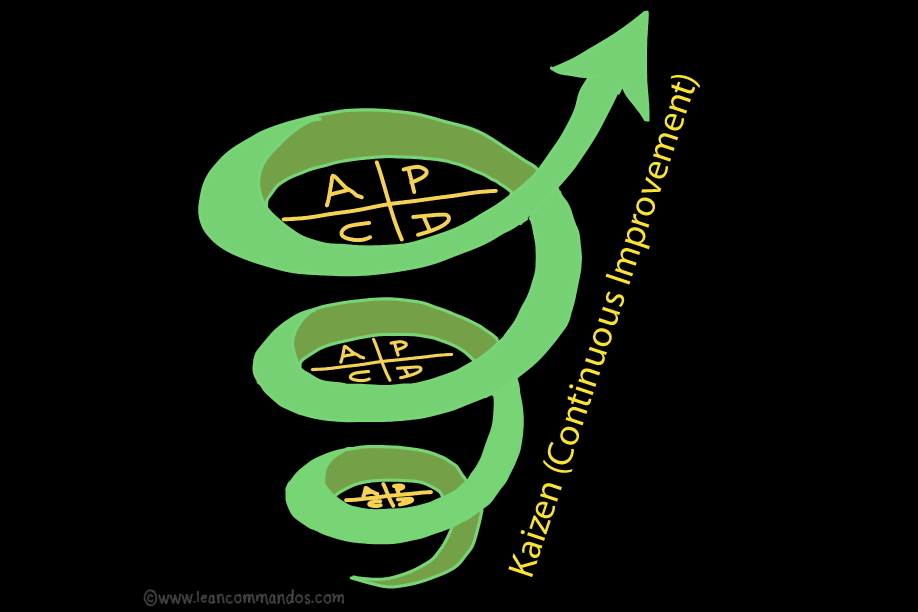
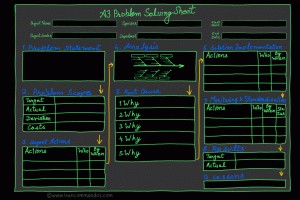
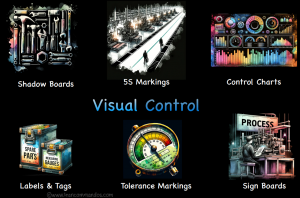
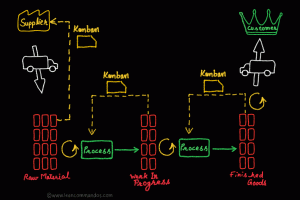
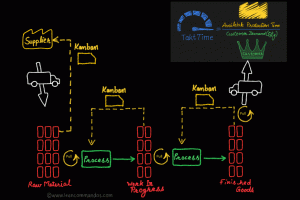

7 Responses
I am constantly invstigating online for ideas that can benefit me. Thanks!
This really answered my drawback, thanks!
Hey There. I discovered your weblog the use of msn. This is an extremely well written article. I will make sure to bookmark it and return to read more of your helpful information. Thanks for the post. I will certainly comeback.
Very neat article. Will read on…
Merely wanna remark that you have a very decent internet site, I love the pattern it really stands out.
I’d have to examine with you here. Which is not one thing I usually do! I take pleasure in reading a post that may make folks think. Additionally, thanks for permitting me to comment!
Hello.This article was extremely interesting, especially since I was searching for thoughts on this issue last Tuesday.